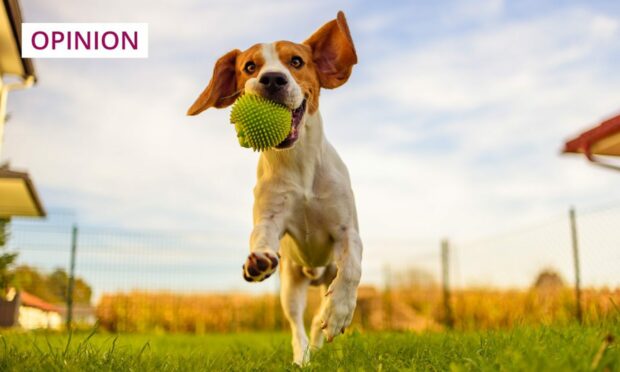It’s that time of year where everyone hopes to be able to relax in the garden and soak up the sun.
Dogs can often be sun-worshippers and, whilst gardens can be stimulating places for them, a lot of plants can be just as dangerous as the likes of chocolate to our canine companions.
Certain plants can cause serious health issues for a dog if ingested. The most popular plants which pose a risk include daffodils, tulips, clematis, geranium, all types of lilies, hydrangeas, bluebells, snowdrops, rhododendrons, irises, azaleas, spider plants and yucca plants.
The trees to stay clear of are bird cherry, horse chestnut, oak and – the most poisonous tree – yew.

These plants and trees are just some which can cause sickness when ingested and, in severe cases, even prove fatal. Other symptoms a dog might experience if they eat a poisonous plant or tree include diarrhoea, excessive drooling, lethargy and difficulty in swallowing. If your pet shows any of these signs, you should contact your vet immediately.
Of course, our gardens aren’t just for us and our pets. With the challenges and pressures facing Scotland’s wildlife at the moment, there’s one thing those of us with a garden can all do to help – make our green space a wildlife haven.
Our animal rescue officers and team at our National Wildlife Rescue Centre are experts in treating and rehabilitating wild animals. If you find any sick or injured wildlife in need of help, please contact our helpline on 03000 999 999, so we can help them return to the wild where they belong.
Hawthorn hedges are good for wildlife and safer for dogs than laurel hedges, which can be toxic. Lower lying foliage, grasses and ferns are generally good, dog-friendly options.
Always double-check before planting something new
Keep dangerous plants out of reach and, if you have ivy with berries, consider cutting them back, away from ground level. For more information regarding toxic trees and plants, please check online before buying or planting anything new.
Anyone with hay fever will be struggling at this time of year, but did you know that your pets could be struggling too?
Pet owners should watch out for substances such as insecticides and poisons that can be toxic to dogs and cats when treating garden nuisances. Amazingly, one in five dog owners have used slug pellets in their garden and unwittingly put their pet at serious risk of harm.
Anyone with hay fever will be struggling at this time of year, but did you know that your pets could be struggling too? Our animals suffer very similar symptoms, such as runny and itchy eyes, skin irritation, swollen eyes and nose, sneezing and coughing. A vet will happily advise you on the best treatment to help alleviate these symptoms.
Sharon Comrie is community and engagement manager for the Scottish Society for Prevention of Cruelty to Animals (SSPCA)




Conversation